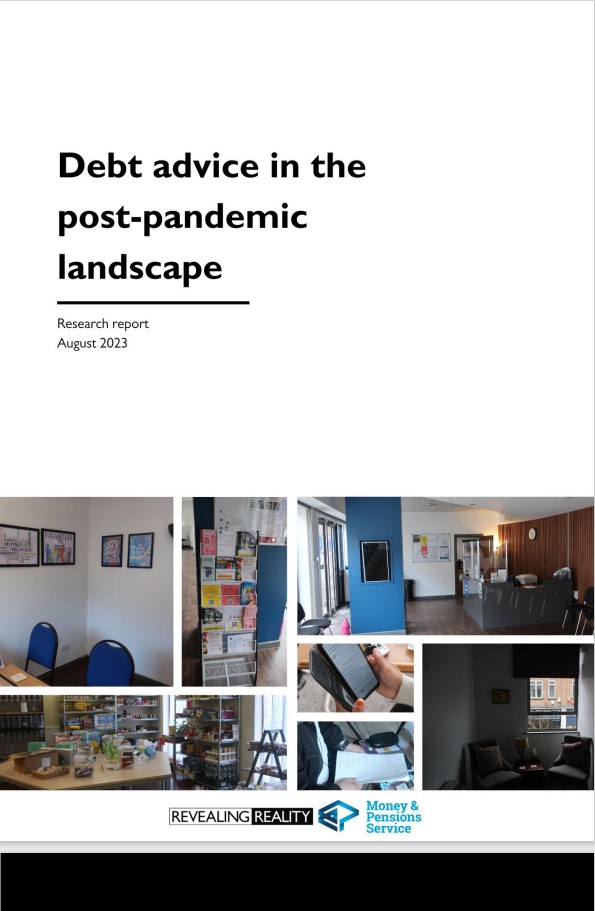The Covid pandemic prompted a transformation in debt advice services. Like most other sectors, distancing restrictions demanded a shift to remote services. The pandemic itself provided debt advice services with a period of relative calm, as the government moratoriums gave people space and time. But once the world started to open up again, they were inundated with increasing numbers of people seeking advice. For many of these people, this was the first time they were experiencing financial instability.
The Money and Pensions Service (MaPS) asked Revealing Reality to explore the operation of debt advice services, to inform their approach towards commissioning. We were keen to work with MaPS to explore how vulnerability affects people’s experiences of debt advice, and how the sector could better support them, especially in the wake of the cost of living crisis that followed the pandemic.
Last year, we visited various debt advice centres, as well as carrying out depth interviews with creditors, to provide an alternative perspective. Conducting a survey also ensured we had a broad sample of people participating in the project, so that our findings painted a full picture of the issues faced by the different groups involved.
From the people accessing these services, two distinct groups emerged: those on the lowest incomes who had been using debt advice services for a long time; and an increasingly significant number of people who were experiencing financial difficulties for the first time.
Crucially, many newcomers to debt advice didn’t see themselves as the ‘sort of person’ to require such services. We frequently identified a lack of understanding around where and how to access the appropriate support.
Often, people who were newly financially vulnerable would rely on the first search results that came up on Google to answer to their needs. Whilst this was suitable for some, frequently this meant people paying for services when it would be more appropriate for them to access the free debt advice available in other places.
Debt advice operators faced challenges in responding to this new cohort’s needs, not only due to volume, but also because the advice they were inclined to give didn’t necessarily apply to many of them. For example, the organisations were supporting more and more advice-seekers who weren’t eligible for any benefits, had a full-time job and were generally more organised with their financial affairs—but they were still struggling to make ends meet. Providing appropriate advice to these individuals proved much more challenging.
This research highlights the need for MaPS to support debt advice organisations in providing more tailored advice for the people seeking help, as well as solutions that are more long-term. Understanding the advice-seeker’s preferred mode of communication, the complexity of their specific financial situation, and their level of confidence in digital technologies will help the sector to respond to vulnerable people’s needs on a more individual basis.

